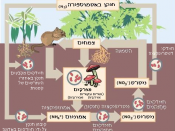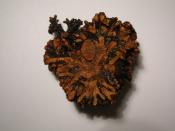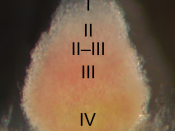Upon initiating our investigation, the hypothesis was that the legume (peapod) seedlings would progress at a better rate using a nitrogen-based nutrient solution and a plant growth inoculum. In our experiment, we planted four separate sets of seeds, each grown in their own respective pot under specific conditions. The set-up of the plants is as follows: Plant 1-Nitrogen Minus Solution with No Inoculum; Plant 2-Nitrogen Minus Solution with Inoculum; Plant 3-Nitrogen Plus Solution with Inoculum; Plant 4-Nitrogen Plus Solution with No Inoculum; each pot containing 5 legume seedlings. The inoculum added to both Plant 2 and Plant 3 contains the bacteria Rhizobium leguminosarum viceae, R. phaseoli, and Bradyrhizobium. The results we collected, however, did not entirely match our hypothesis. Unexpectedly, Plant 3, the plant fed with nitrogen plus solution and inoculum - which was originally speculated to grow the best out of the four - developed at a more declining rate and had the most number of dead seedlings in the end than the plants in the other three pots.
When drawing close to the evaluation at hand, we collected data that proved Plant 4 was the one that showed the most growth and improvement out of all four of the pots. Aside from the information gathered for Plant 3 and Plant 4, we also collected data that Plant 2, nitrogen minus solution with inoculum, grew slightly larger than Plant 1, nitrogen minus solution with no inoculum.
Introduction:
As with the great majority of many other organisms, plants make use of Nitrogen (N) as one of the primary sources of nutrients in order to grow and produce energy. Formally occurring in the surrounding ecosystem, nitrogen is naturally reduced to form a variety of other biological molecules that can be utilized in the development of photosynthetic plants. These alternative...


